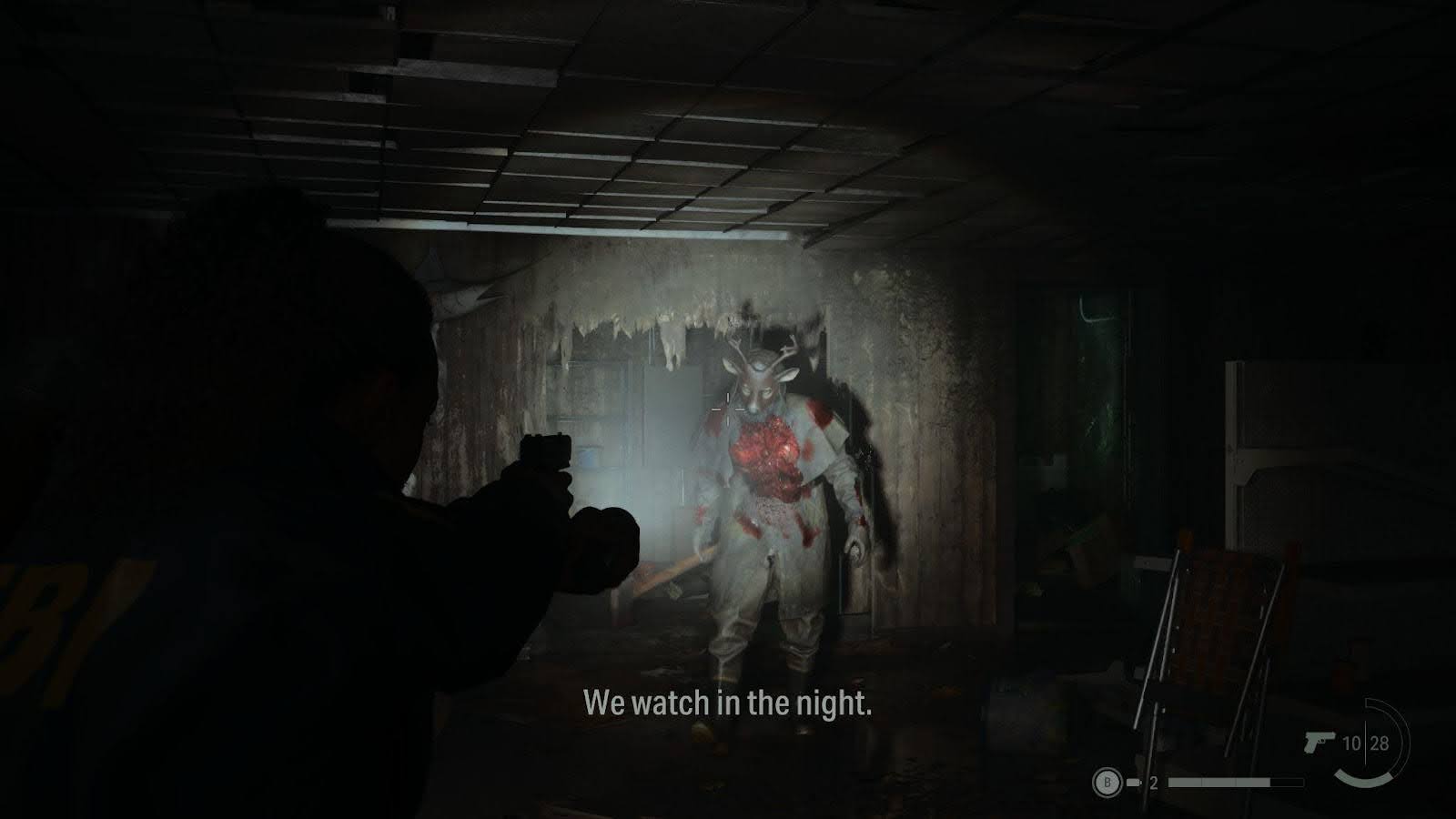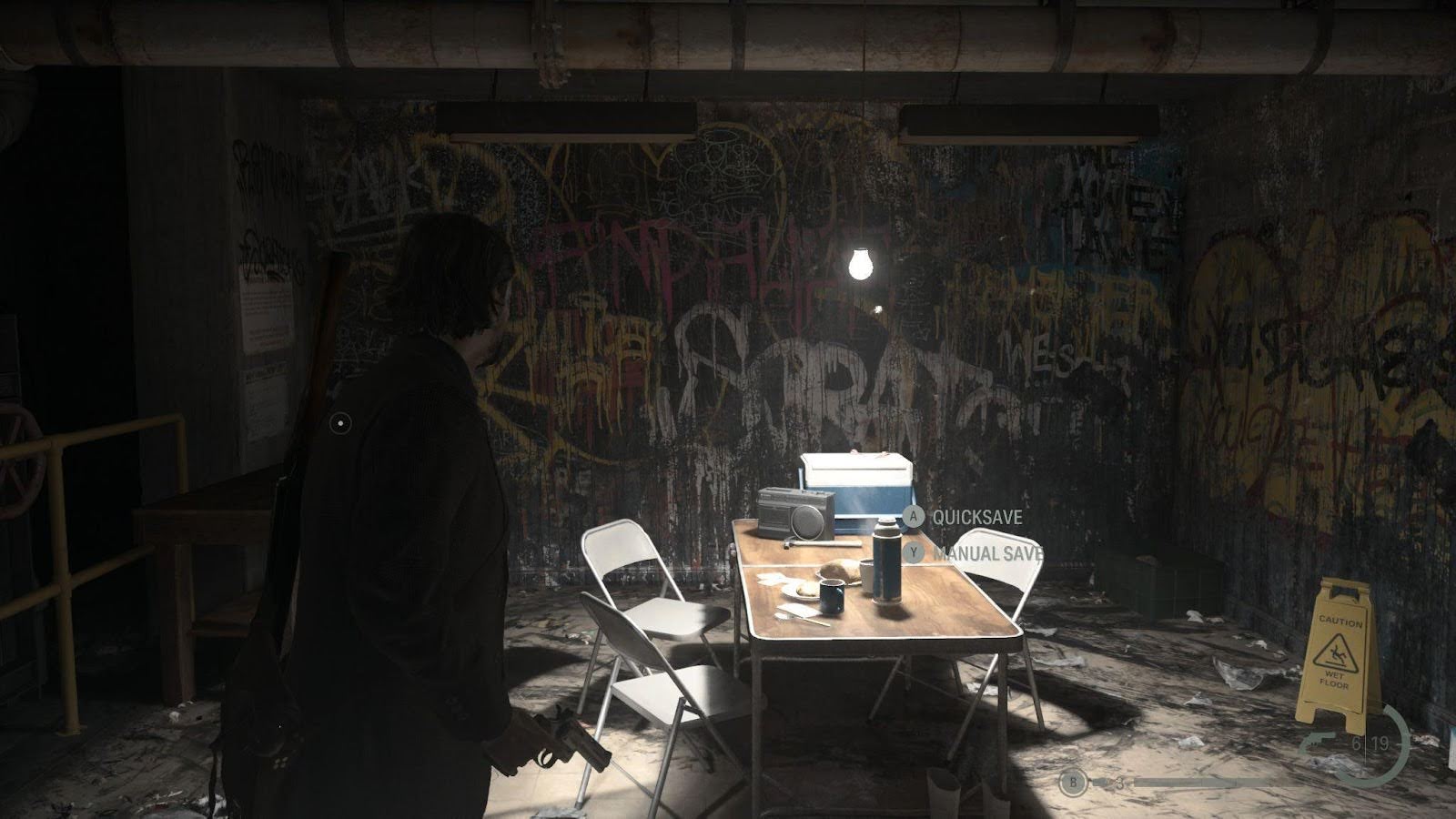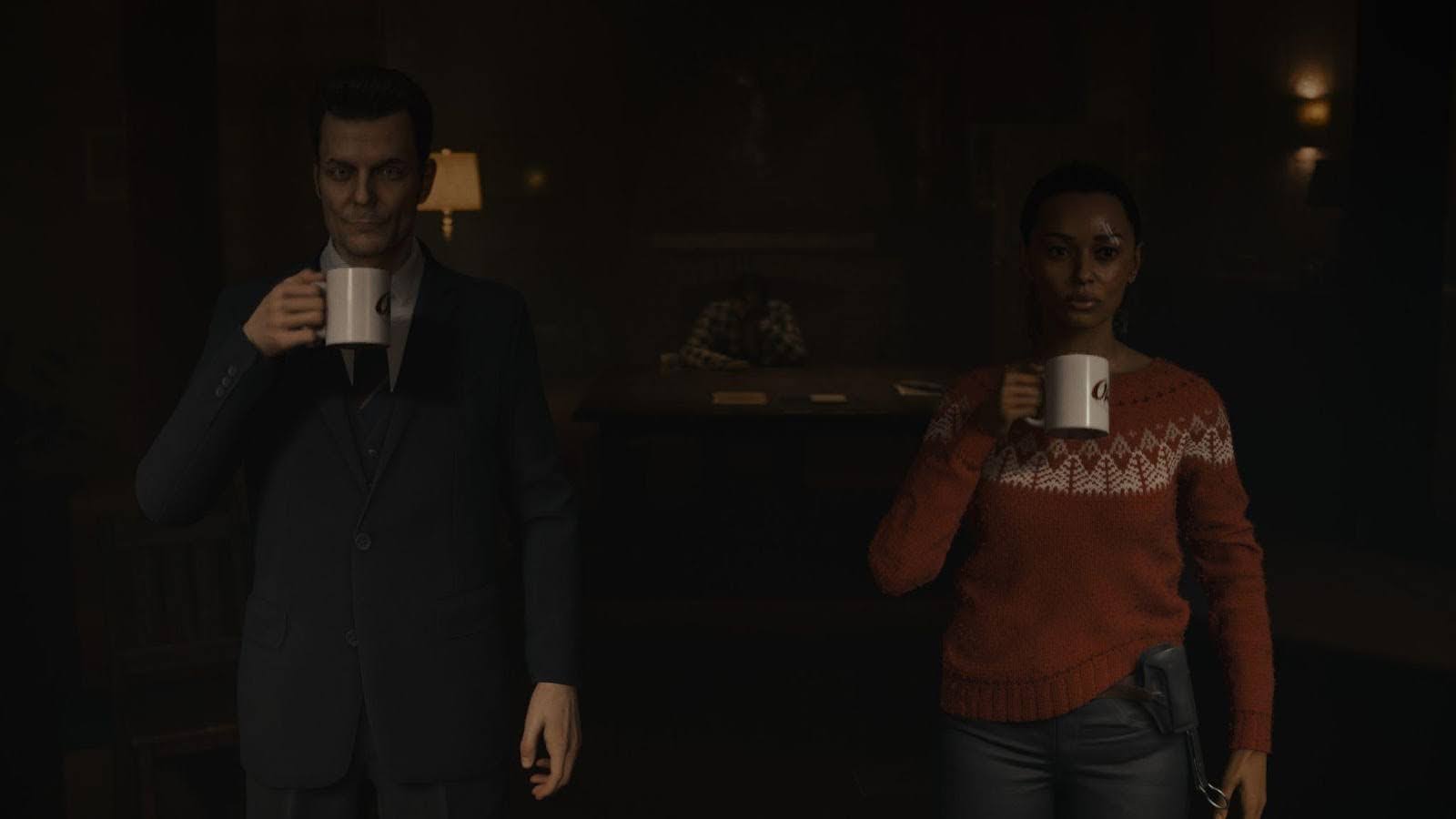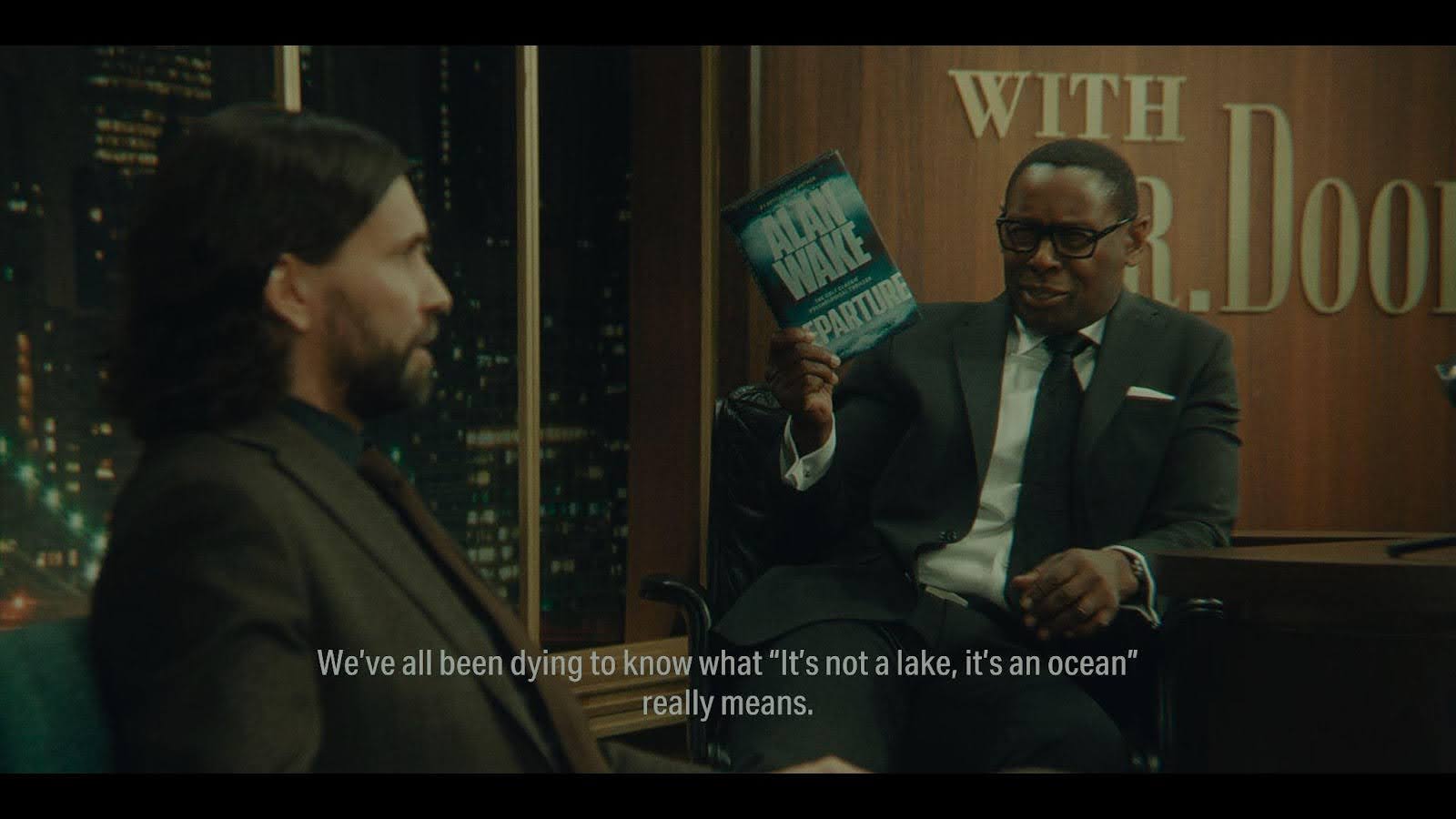By Eloin Barahona Garcia
“Alan Wake” was one of the unsung heroes of the Xbox 360 and PC in 2010. If you were a huge fan of horror games, you more than likely picked this and “Alan Wake’s American Nightmare,” a side story game, at some point in the 360’s lifespan.
The original game isn’t perfect, but it exists in that particular space of gaming where you can tell something, while very flawed, was made with lots of love. The writing is fun and strange while the gameplay was just tense enough to keep you on your toes. Developer Remedy Entertainment would quietly shelve the IP for years due to business difficulties until out of the blue, “Alan Wake II” was announced at The Game Awards in 2021.
Now, almost 13 years since the original game came out, we’ve got the sequel in our hands.
Was the 13-year wait worth it? Most definitely.
A Dark Beauty

“Alan Wake II” is a gorgeous game. Environments are breathtaking. Everything from dark, brooding dream-like cities to lively, homey small towns just feel completely real. And it’s all compounded with the excellent lighting system that is a core component of the games’ aesthetic. The way lights dance off the surfaces of dark rooms and illuminate the eerie forested areas is truly astounding.
Environments shift and twist in interesting ways to create a sense of unease and even distrust. A simple apartment complex you explore later goes from creepy to nuts with some shifts in art design, audio cues and good old-fashioned creepy music to make everything feel unsettling. Enemies speak in either hushed whispers or violent non-sequiturs that will tickle the ear in an unsettling way.
That’s not to say that the audio is all just creepy ambience. There are some absolute show stopping music tracks in the game that will make you pause and listen for a bit. Finnish band Poets of the Fall do a great job of creating some serious earworms that will stick with you days after you put the game down. There are other artists that have contributed to the game’s soundtrack but these guys steal the show every time a rock and roll segment shows up in the game.
Light Em’ Up

Light is your friend here. You’ll have to learn how to use it wisely in order to survive everything the game throws at you. The main mechanic is simple: charge your flashlight at an approaching enemy to rip off a “darkness shield” they have on and fire away with your gun. In the first game, this mechanic was supplanted by constant refills of ammunition and batteries for your flashlight.
At first, supplies are a lot more limited than in the first game, as you get maybe a handful of any given thing at a time. For a while, it feels like proper survival horror. But after a certain point, you’ll discover that the game is a lot more forgiving than expected. Even playing on Hard Mode, the game will drop the occasional box of ammo from dead enemies. By the end of the game, you’ll be inundated with tons of supplies.

Depending on how pure you like your survival horror experience, you might feel a little cheated on the challenge available. But even with the rather blunted difficulty, the game is still very engaging from start to finish. Aside from combat, there’s plenty of exploration and puzzles as a nice distraction from the relentless enemies.
You’ll get to explore the entirety of the game’s setting of “Bright Falls” and the otherworldly space known as “The Dark Place.” No one location looks the same and each features their own set of locations to keep things fresh. Most notably, you’ll be able to switch between the two protagonists, Alan Wake and Saga Anderson, after a certain point in the game.
Each character has their own set of weapons to collect, upgrades to obtain, and story beats to experience in whatever order you want. Saga’s sections are set in the town of Bright Falls while Alan explores the twisted world of The Dark Place. Both offer something unique, namely the ways in which each character interacts with the world around them.

Saga, being a detective, has a “Mind Place” to enter into whenever she wants. In it, you can upgrade her abilities, look at collectibles you’ve obtained, profile suspects and sort clues in order to reach new objectives. Alan has the “Writer’s Room,” which is similar in function to Saga’s Mind Place but with the added mechanic of being able to shape the world around him with words.
Being a writer in a supernatural realm lets him twist the scenery with applicable subjects to different “scenes” he encounters in his sections. As an example (not in the game), you could have the phrase “Train Derailment” and can apply it to the Train Station you’re currently looking at which will cause the train to be suddenly derailed. As such, Alan’s sections feel very refreshing despite still being structured like Saga’s; the shaping of the world around you makes for some engaging and visually spectacular moments of gameplay.
A Wordsmith’s War

The story of Alan Wake has been a strange, twisted, and fun ride since 2010. The first game is probably the most straightforward entry. In it, protagonist Alan Wake is trapped in the aforementioned Dark Place at the end of the game.
The sequel takes place 13 years later, opening with FBI Agents Saga Anderson and Alex Casey arriving in Bright Falls to investigate a series of ritualistic murders. Soon after arriving, they find themselves wrapped up in the strangeness of the town and Alan’s attempts to finally escape The Dark Place.
While the premise might seem pretty fantastical, know that it’s only the tip of the iceberg. The story of “Alan Wake II” has many twists and turns that will keep you guessing as to where things are going to go. The story sometimes uses different mediums such as music or film to convey extra details. One moment you’re watching a television-spouting exposition and the next you’re participating in a Broadway-worthy musical number.
The mix of mediums lends itself well to the sometimes surreal and chaotic reality that “Alan Wake II” presents us with. While some might find this overwhelming, others will find it invigorating and exciting. If you’re a fan of crime dramas and David Lynch, this story will keep your attention.

Keeping us grounded in all of the madness is the new protagonist, Saga. Despite not being the most complex of characters, her cool demeanor and odd bad pun break up the intensity of the horror. She starts the game as a confident, self-assured special agent that is tested as the events of the game start to twist her place in the world. You’ll want to see Saga make it out unscathed by the end of the game.
In contrast, Alan Wake himself is morose and belligerent because of his time in The Dark Place, and as such is not as approachable as Saga. His sections are a lot more surreal as the environment twists and turns to torture him emotionally and psychologically. He himself feels like he’s slowly drowning in misery as the toll of his situation weighs on him greatly, which is a huge departure from the original game.
Back then, he was resolved to escape The Dark Place and return to his wife. While those motivations are still here in the sequel, they’re punctuated by the ever growing dread of the escalating horror. By the end of the game, Alan’s story leads him to some pretty dark places (pun completely intended).

That’s not to say there’s no fun to be had in this horror story. Saga’s banter with her partner, Alex Casey, is very endearing and serves as another bit of respite from the terror. Their relationship and the quirky town of Bright Falls lets the game really shine as being just a good time. The inhabitants you can directly talk to have plenty of interesting things to say about the events taking place and the town itself.
This levity really helps the horror shine when it rears its head out of nowhere. And in those moments, we see our protagonists shine as they’re constantly placed on the backfoot when faced with this immense supernatural threat.
The only complaint with the story is that its antagonist (Mr. Scratch) is not as entertaining as he was in previous games. Without spoiling too much, “Mr. Scratch’s” presence here feels more like a force of nature rather than a malevolent entity. It makes for solid horror but loses the fun personality he had in the first game and American Nightmare.
Return of the King

To say “Alan Wake II” is a successful return to form for the game would be an understatement. It’s almost unheard of for a long-awaited sequel to a dormant but beloved game to be as triumphant as this. A story 13 years in the making not only arrived, but also exceeded the expectations of fans by using two protagonists.
That in and of itself is impressive, as balancing a story around one character can be tricky for even the most seasoned writers. But creating an engaging story around two is a monumental feat. To also have the game be a lengthy 20 hours on an average playthrough and be engaging to play the whole while just adds to the feat.
Without a doubt, if you want a game to not just be scary but refreshingly bold and entertaining as well, know you’re in good hands with this one. “Alan Wake II” is one for the history books as one of the best sequels to ever exist. Make sure you have played the original game, its extra content, and American Nightmare to fully understand everything.
Otherwise, you might be in for a rude awakening.







